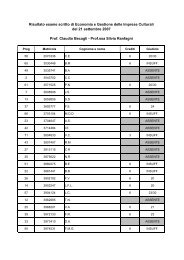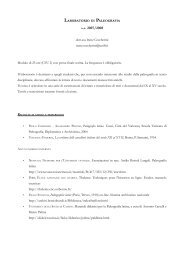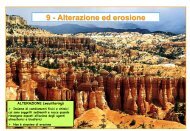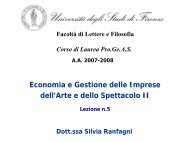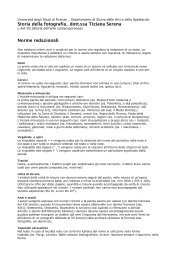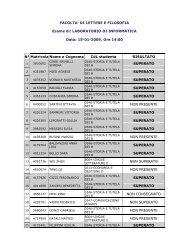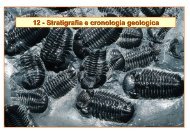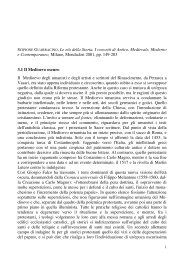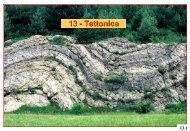Beyond Pragmatics. Morphosyntactic Development in Autism.pdf
Beyond Pragmatics. Morphosyntactic Development in Autism.pdf
Beyond Pragmatics. Morphosyntactic Development in Autism.pdf
Create successful ePaper yourself
Turn your PDF publications into a flip-book with our unique Google optimized e-Paper software.
J <strong>Autism</strong> Dev Disord<br />
are typically matched on verbal ability, the autism<br />
group may conta<strong>in</strong> children who are not delayed on<br />
tests of nonverbal ability. The match<strong>in</strong>g process may<br />
then obscure the greater language deficits of participants<br />
<strong>in</strong> the autism group, relative to other cognitive<br />
doma<strong>in</strong>s.<br />
In addition, most studies exam<strong>in</strong><strong>in</strong>g syntactic<br />
development <strong>in</strong> autism occurred prior to the advent of<br />
rigorous, reliable diagnostic measures such as the<br />
<strong>Autism</strong> Diagnostic Interview-Revised (Cox et al., 1999;<br />
Lord, Rutter, & LeCouteur, 1994) and the <strong>Autism</strong><br />
Diagnostic Observation Schedule (Lord et al., 1989;<br />
Lord, Rutter, & DiLavore, 1998) <strong>in</strong> the late 80’s and<br />
early 90’s. A comprehensive <strong>in</strong>vestigation of language<br />
<strong>in</strong> a well-controlled sample of children with autism,<br />
compared with both typically develop<strong>in</strong>g and developmentally<br />
delayed groups, is needed.<br />
The present study was designed to address the<br />
conflict<strong>in</strong>g and sparse literature on syntactic development<br />
<strong>in</strong> young children with autism, <strong>in</strong>vestigat<strong>in</strong>g<br />
whether children with autism exhibit syntactic abilities<br />
commensurate with their developmental age. In addition<br />
to morphosyntactic or grammatical function<strong>in</strong>g,<br />
we assessed a broad spectrum of communicative<br />
abilities, <strong>in</strong>clud<strong>in</strong>g lexical knowledge; discourse or<br />
turn-tak<strong>in</strong>g abilities; the occurrence of errors; the<br />
occurrence of jargon and echolalic speech; and<br />
discourse characteristics of adult <strong>in</strong>terlocutors.<br />
Methods<br />
Participants<br />
Participants <strong>in</strong> this study <strong>in</strong>cluded children <strong>in</strong> three<br />
groups: (a) children with autism ages 3–6 years; (b)<br />
children with non-specific developmental delays (DD),<br />
matched on nonverbal IQ, gender, and chronological<br />
age; and (c) typically develop<strong>in</strong>g (TD) children<br />
matched on non-verbal IQ and gender. Participant<br />
<strong>in</strong>formation is presented <strong>in</strong> Table 1. Both the DD<br />
and autism groups were verbal and relatively highfunction<strong>in</strong>g,<br />
with mean non-verbal IQ scores <strong>in</strong> the low<br />
average range.<br />
<strong>Autism</strong> Group<br />
Interviews to confirm the diagnosis of autism were<br />
conducted by the pr<strong>in</strong>ciple <strong>in</strong>vestigator us<strong>in</strong>g the<br />
ADI-R and the ADOS (module 2) with all children<br />
<strong>in</strong> the autism group. Both the ADOS and the ADI-R<br />
were scored accord<strong>in</strong>g to DSM-IV and ICD-10<br />
criteria for autism disorder. Only subjects whose early<br />
development and current level of function<strong>in</strong>g met<br />
strict criteria for a diagnosis of autism on both the<br />
ADOS and the ADI-R were <strong>in</strong>cluded (see Table 2).<br />
To be <strong>in</strong>cluded, participants had to be produc<strong>in</strong>g at<br />
least 2-word phrases; all but one of the ASD participants<br />
had been talk<strong>in</strong>g for at least 12 months at the<br />
time of the study, and could be described as currently<br />
verbal. 1 However, all children <strong>in</strong> this group had significant<br />
early language impairments, and none could<br />
be described as meet<strong>in</strong>g criteria for Asperger syndrome<br />
or Pervasive <strong>Development</strong>al Disorder/Not<br />
Otherwise Specified.<br />
<strong>Development</strong>ally Delayed Comparison Group<br />
Participants <strong>in</strong> the DD group were recruited from a<br />
local school provid<strong>in</strong>g special education services.<br />
Inclusion criteria were that children be receiv<strong>in</strong>g special<br />
education through Early Intervention or the Board<br />
of Cooperative Educational Services. Parents of all<br />
participants completed the Child Behavior Checklist<br />
(CBCL; Achenbach, 1991) to assess for comorbid<br />
diagnoses. Where there was any reason to suspect<br />
difficulties <strong>in</strong> social development, the ADI-R and<br />
ADOS were adm<strong>in</strong>istered (n = 2). None of the children<br />
<strong>in</strong> this group had a history or current symptoms<br />
consistent with ASD.<br />
Typically Develop<strong>in</strong>g Comparison Group<br />
Children were recruited for the TD group from the<br />
community, and parents completed the CBCL. All<br />
parents gave <strong>in</strong>formed consent for their children to<br />
participate <strong>in</strong> research.<br />
Match<strong>in</strong>g Procedures<br />
Intellectual function<strong>in</strong>g was assessed with a short form<br />
of the Stanford-B<strong>in</strong>et Intelligence Scale: Fourth<br />
Edition (SB-IV, Thorndike, Hagen, & Sattler, 1986).<br />
The nonverbal reason<strong>in</strong>g factor <strong>in</strong>cludes four subtests<br />
(Bead Memory, Copy<strong>in</strong>g, Quantitative, and Pattern<br />
Analysis; Sattler, 1992) appropriate for assess<strong>in</strong>g<br />
<strong>in</strong>tellectual function<strong>in</strong>g <strong>in</strong> young children with developmental<br />
disabilities (Carpentieri & Morgan, 1994;<br />
Lawson & Evans, 1996).<br />
As stated above, participants were <strong>in</strong>cluded only<br />
if they were already comb<strong>in</strong><strong>in</strong>g words <strong>in</strong>to at least<br />
2-word phrases. Many previous studies have matched<br />
1 When analyses were repeated, exclud<strong>in</strong>g the child who had<br />
been talk<strong>in</strong>g for only 4 months, results were identical.<br />
123


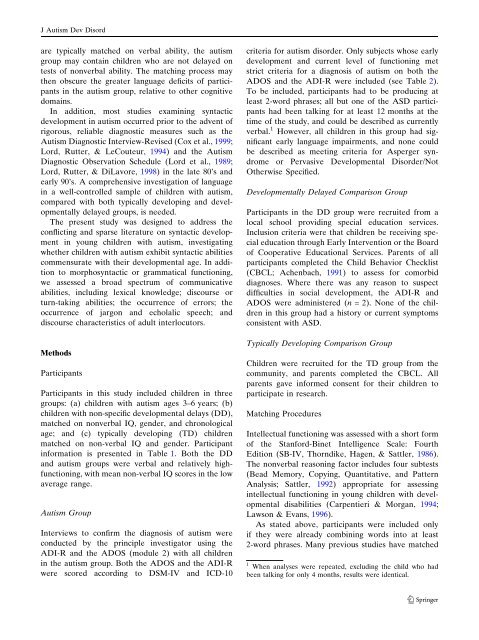
![PATROLOGIA GRECA E LATINA [Patrologiae cursus completus]. All ...](https://img.yumpu.com/50711133/1/184x260/patrologia-greca-e-latina-patrologiae-cursus-completus-all-.jpg?quality=85)
